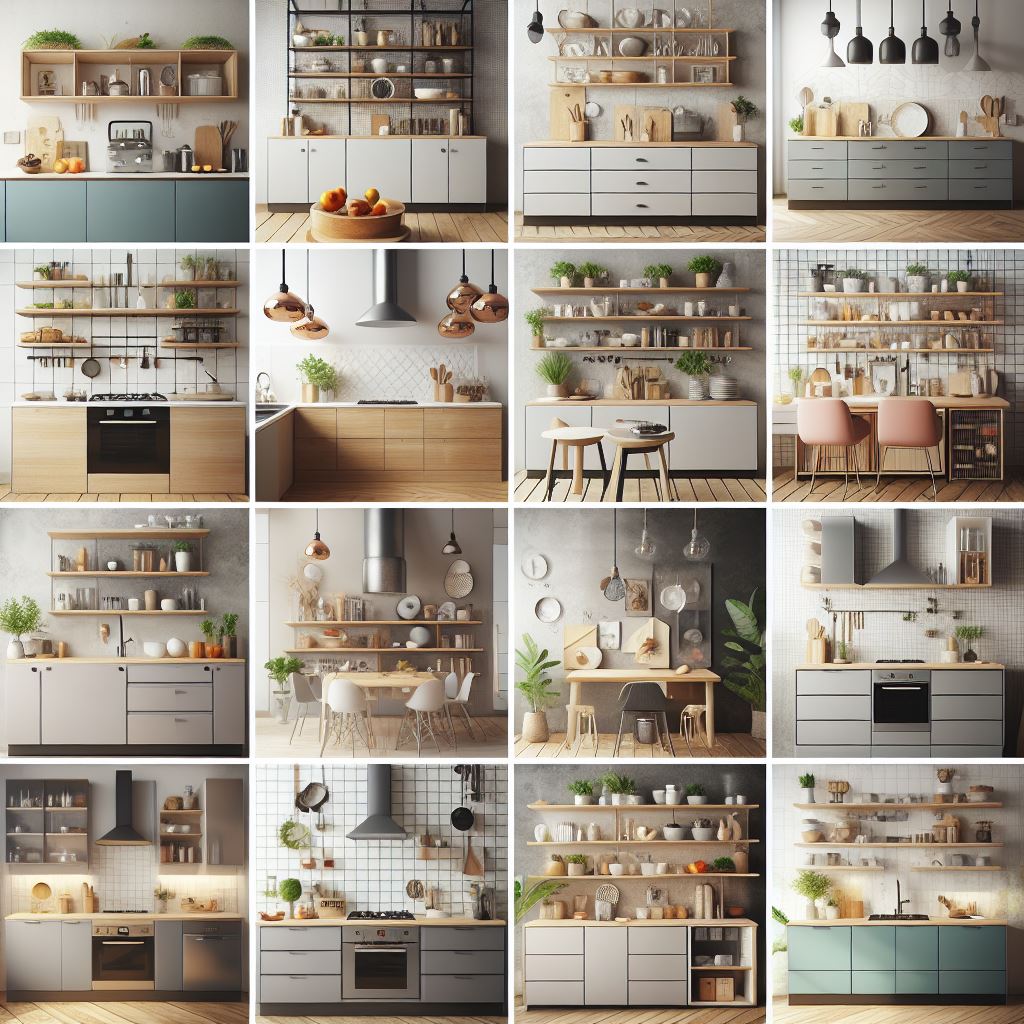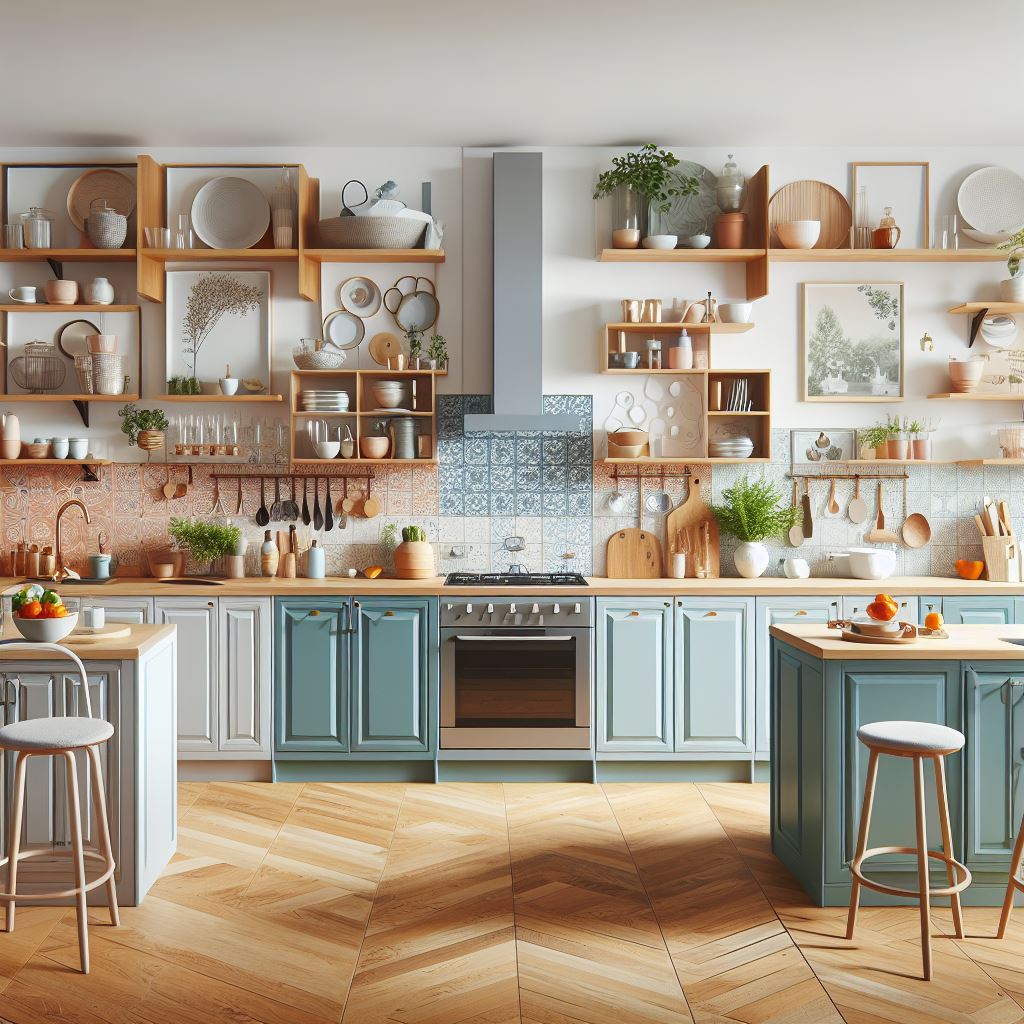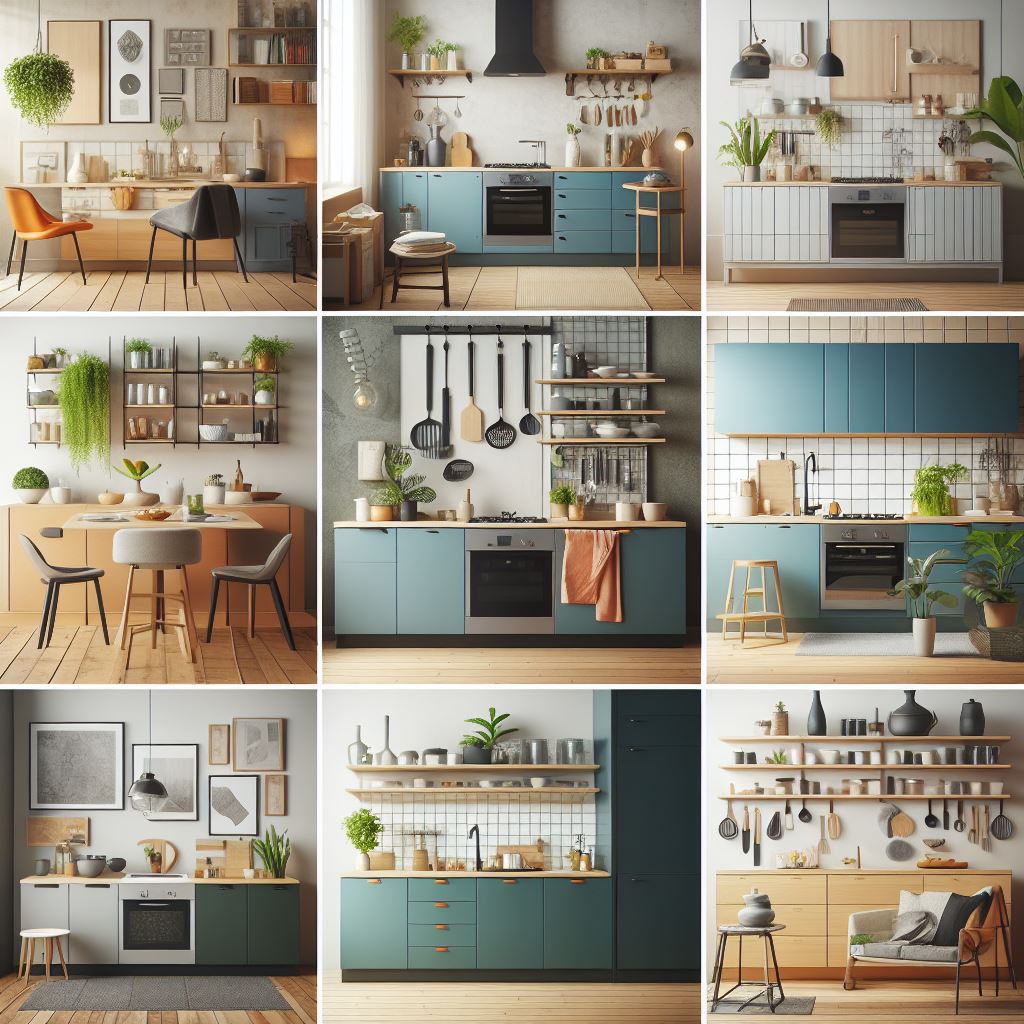Affordable yet Fabulous: DIY Tips for a Stunning Low-Cost Kitchen Makeover Leave a comment
Designing a kitchen on a budget can seem daunting, but it is very achievable with some planning and creativity. Kenya has seen a boom in affordable housing, and homeowners want kitchens that are functional, efficient and stylish without high costs. The good news is that simplicity is the key to low-cost kitchen design success.
This article will cover the fundamentals of designing an inexpensive yet effective kitchen for Kenyan homes. We’ll look at the benefits of simple kitchens, key elements to focus on, space-saving layouts and tips, material options, whether to DIY or hire a contractor, and more. With some clever ideas and focus on simplicity, you can create a kitchen that maximizes function and minimizes spending without sacrificing style.
Benefits of Simple, Low-Cost Kitchen Designs in Kenya

Opting for a simple, low-cost kitchen design in Kenya has many advantages:
- Saves money – Less complex designs require less materials, labor, and overall expense to execute. Simplicity avoids unneeded costs.
- Efficient use of space – A compact, functional layout maximizes every inch of space. Less room for wasted areas.
- Easier to DIY – Simple kitchens can often be DIYed even by beginners. Less daunting than intricate designs.
- Focuses on key elements – Keeping things simple allows you to spend money on the most essential features rather than superfluous decor.
- Easier to clean/maintain – Minimalist kitchens reduce nooks and crannies that collect dirt. Easy to keep tidy.
- Flexible functionality – Simple layouts can often be adapted later on if needs change. Customizable and adaptable.
- Timeless styling – Clean, unfussy designs tend to stay stylish over trends. Classic and enduring.
For Kenyan homeowners on a tight budget, emphasizing simplicity in kitchen design is the best approach for an affordable yet high-quality space.
Key Elements to Focus on for Simple Kitchen Design
When aiming for a low-cost yet functional kitchen, there are a few key elements to focus your budget on:
Storage
Maximize cabinets, shelves, and drawer space for utensils, appliances, pantry items. Opt for built-ins over freestanding furniture.
Counter Space
Provide ample continuous counter space for food prep tasks. Island or peninsula counters add space without walls.
Appliances
Invest in quality essential appliances – stove, refrigerator, sink. Look for energy-efficient models on sale.
Sinks
Durable stainless steel sinks are affordable. Include drainboards on either side.
Task Lighting
Properly illuminate work areas like counters, stove, sink. LEDs are budget-friendly.
Ventilation
Include windows and add exhaust fan over stove to control moisture, odors.
Easy-Clean Surfaces
Use inexpensive backsplashes and flooring that are water-resistant and easy to clean.
Seating
Bar stools at an island or peninsula provide casual seating without cluttering space.
Focusing budget on these key functions ensures a kitchen has what it truly needs – robust storage, prep space, appliances, sinks, lighting, and ventilation.
Space-Saving Tips and Layout Ideas in Kenya

Small spaces can still be highly functional kitchens with some clever space-saving tips:
- Optimize triangle – Maximize efficiency by placing fridge, stove, and sink at triangle points for easy movement.
- Multi-purpose island – Islands can provide counter space, cabinets, seating, and division from living areas.
- Peninsula counters – Adding a peninsula creates useful counters without closing in space like walls.
- Tall cabinets – Floor-to-ceiling tall cabinets maximize vertical storage space.
- Hidden storage – Use wasted void spaces for pull-out shelves, trays, and drawers.
- Remove non-essentials – Skip decorative elements like dual sinks, breakfast nooks. Stick to basics.
- Shared appliances – Combine appliance functions like a microwave/vent fan or oven/microwave.
- Fold-down prep space – Hinged wall-mounted tables provide pop-up prep room when needed.
- Mobile carts – Carts with casters allow flexible extra storage/prep space.
With some savvy choices, small kitchens can feel open rather than cramped. Focus on multi-purpose and vertical storage.
DIY vs Hiring a Contractor for Simple Kitchen in Kenya
When tackling a simple, low-cost kitchen design in Kenya, two options to consider are DIY or hiring a kitchen contractor. Here’s an overview of the pros and cons:
DIY Kitchen
Pros:
- Minimizes labor costs
- Greater control over customization
- Opportunity to learn useful skills
- Flexible scheduling/pacing of project
Cons:
- Requires DIY skills and knowledge
- Potential for novice mistakes or safety issues
- Can take more time than hiring pros
- Need to source all tools and materials
Hiring a Contractor
Pros:
- Gets project done quickly and efficiently
- Experienced skills and professional results
- Coordinates all tools, materials, disposal
- Licensed and insured
Cons:
- Adds higher cost for labor
- Less flexibility and control over process
- May try to push excessive upgrades
The Verdict
For very simple kitchens in Kenya using stock cabinets and basic upgrades, DIY can be a good option to save money. But for more complex projects, hiring a competent contractor is worth the investment for proper planning, skills, efficiency, and quality results. Assess your DIY skills vs. budget to determine the best route.
Low-Cost Materials and Budget-Friendly Options
Here are some inexpensive materials and budget buys to consider when designing a simple, affordable kitchen in Kenya:
- Cabinets – Opt for ready-to-assemble cabinets over custom. Stock melamine is an affordable option.
- Countertops – Laminate countertops offer lots of patterns/colors at budget prices. DIY-friendly.
- Backsplash – Use inexpensive ceramic tile or laminate backsplash panels (no grout needed).
- Flooring – Sheet vinyl, tile vinyl, and laminates are affordable flooring options.
- Lighting – LED strips and under-cabinet puck lights provide task lighting without heavy costs.
- Sinks – Drop-in stainless sinks are an economical choice. Bar/prep sinks also save space.
- Faucets – Kitchen faucets start around $50. Look for a pull-down sprayer model.
- Appliances – Check sales on models with modest features and energy ratings.
With some deal hunting and savvy material choices, creating a functional kitchen is very achievable even on a tight budget. Focus spending on key elements rather than luxury finishes.
Key Takeaways
- Simplicity is key for low-cost kitchen design in Kenya. Avoid complexity.
- Focus budget on essential storage, counters, appliances, sinks, lighting and ventilation.
- Use space-saving layouts like islands and peninsulas. Go vertical with tall cabinets.
- Laminates, melamine, vinyl and LEDs are budget-friendly material options.
- Assess DIY skills vs calling in contractors for labor help.
- Ready-to-assemble cabinets and stock components keep costs down.
- With smart choices, you can create an affordable kitchen optimized for function.
Read also:
